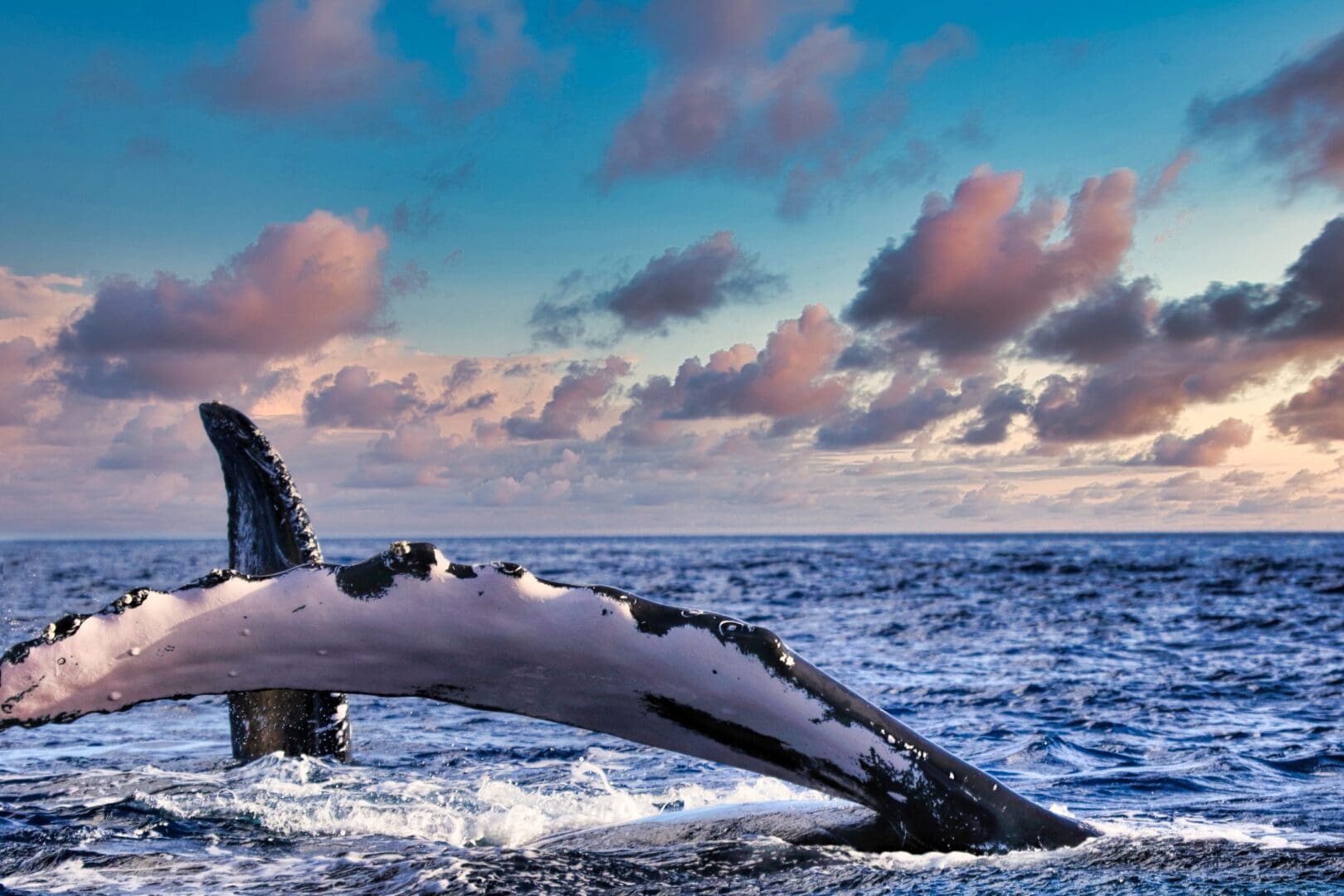Hawaii’s beloved Humpback whales are back, playing off the shores of Oahu’s famous Diamond Head. On a recent sailing venture we received sightings over the VHF radio and are happy to report that there are confirmed sightings off the South shore of Oahu! Get out your binoculars and lets go sailing. Our private whale watching cruise is the best way to get out on the water and see the Humpback whales in action.
Every winter, thousands of humpback whales travel to the warm, shallow waters of Hawaii to mate, give birth, and raise their young. Hawaiian Islands Humpback Whale National Marine Sanctuary protects these whales and their habitat. The sanctuary’s mission is to protect Hawaiian humpback whales and this extremely important habitat through education, research, and resource protection efforts. The sanctuary works with the community and partners like HSC to reduce threats to humpback whales. Honolulu Sailing Co. respects and promotes the Hawaiian Islands Humpback Whale National Marine Sanctuary mission. “Responsible wildlife viewing and education promotes stewardship, helping protect these
animals at a critical time in their lives, said Ed Lyman, Natural Resource Management Specialist
for the sanctuary. “Ocean users play an important role by helping the sanctuary monitor
humpback whales in the sanctuary and nearby waters.” As sailors and ecologists we are dedicated to ensuring their habitat is well kept for generations to come.
News from the Hawaiian Islands Humpback Whale National Marine Sanctuary
Ocean users are urged to use care as abundance of mother/calf pairs are seen in Hawaiʻi.
An abundance of mother/calf pairs have been recently observed in Hawaiian Islands Humpback
Whale National Marine Sanctuary and nearby waters.
Humpback whale season in Hawai’i generally runs from November through May, although
whales may be encountered in limited numbers during other months. Thousands of humpback
whales return to Hawaiian waters each year to breed, give birth, and nurse their young.
“Responsible wildlife viewing and education promotes stewardship, helping protect these
animals at a critical time in their lives, said Ed Lyman, Natural Resource Management Specialist
for the sanctuary. “Ocean users play an important role by helping the sanctuary monitor
humpback whales in the sanctuary and nearby waters.”
With recent reports of multiple mother/calf pairs in Hawai’i, ocean users are reminded to keep a
safe distance from these annual visitors to Hawaiian Islands Humpback Whale National Marine
Sanctuary. Collisions with vessels are a risk to both the animals and humans.
Boaters are reminded to post a lookout at all times throughout the year, not just when whales
are visiting our waters. An extra set of eyes scanning the waters ahead and to the side of a boat
can prevent collisions with marine life, obstructions, divers and other vessels. Slower speeds
may also reduce the risk of collisions with the animals.
Humpback whales are protected in Hawai’i. Federal regulations prohibit approaching within 100
yards of whales when on or in the water, and 1,000 feet when operating an aircraft. These and
other regulations apply to all ocean users, including vessel operators, kayakers, paddle
boarders, windsurfers, swimmers and divers throughout the Hawaiian Islands.
If you see an entangled whale:
An example is reporting humpback whales entangled in gear. Entanglement may not impact the
animal immediately, but can result in starvation, physical trauma and infections, and may
contribute to vessel strikes since the animals are less mobile.
The Hawaiian Islands Large Whale Entanglement Response Network, a community-based
effort led by the sanctuary, supports large whale entanglement response efforts statewide under
the authorization of a permit from NOAA Fisheries and their Marine Mammal Health and
Stranding Response Program. The network involves many state and federal agencies, including
the State of Hawai’i Department of Land and Natural Resources, NOAA Fisheries Pacific
Islands Regional Office, and the U.S. Coast Guard, as well as private non-governmental
organizations, fishermen, researchers and other individuals.
Contact the experts:
Whale rescue is complex and dangerous for the whale rescuers as well as the animal.
If you see an injured or entangled marine mammal, keep a safe and legal distance, and call
NOAA’s 24/7 Marine Wildlife Hotline at 888-256-9840 or hail the U.S. Coast Guard on VHF
channel 16 immediately. Do not enter the water or try to disentangle a whale yourself.
People have been killed. Removing buoys or portions of trailing gear may actually do more
harm than good, as doing so leaves lethal wraps behind with less likelihood that the animal will
be re-sighted. The best way to help an entangled whale is to report the sighting immediately,
alerting authorized responders who have training, experience and that are well-equipped the
opportunity to not only free the animal of all gear, but gain valuable information towards
reducing the threat.
For more info on the Web:
Hawaiian Islands Humpback Whale National Marine Sanctuary:
http://hawaiihumpbackwhale.noaa.gov
NOAA Office of National Marine Sanctuaries: http://sanctuaries.noaa.gov
State of Hawai’i Division of Aquatic Resources: https://dlnr.hawaii.gov/dar

